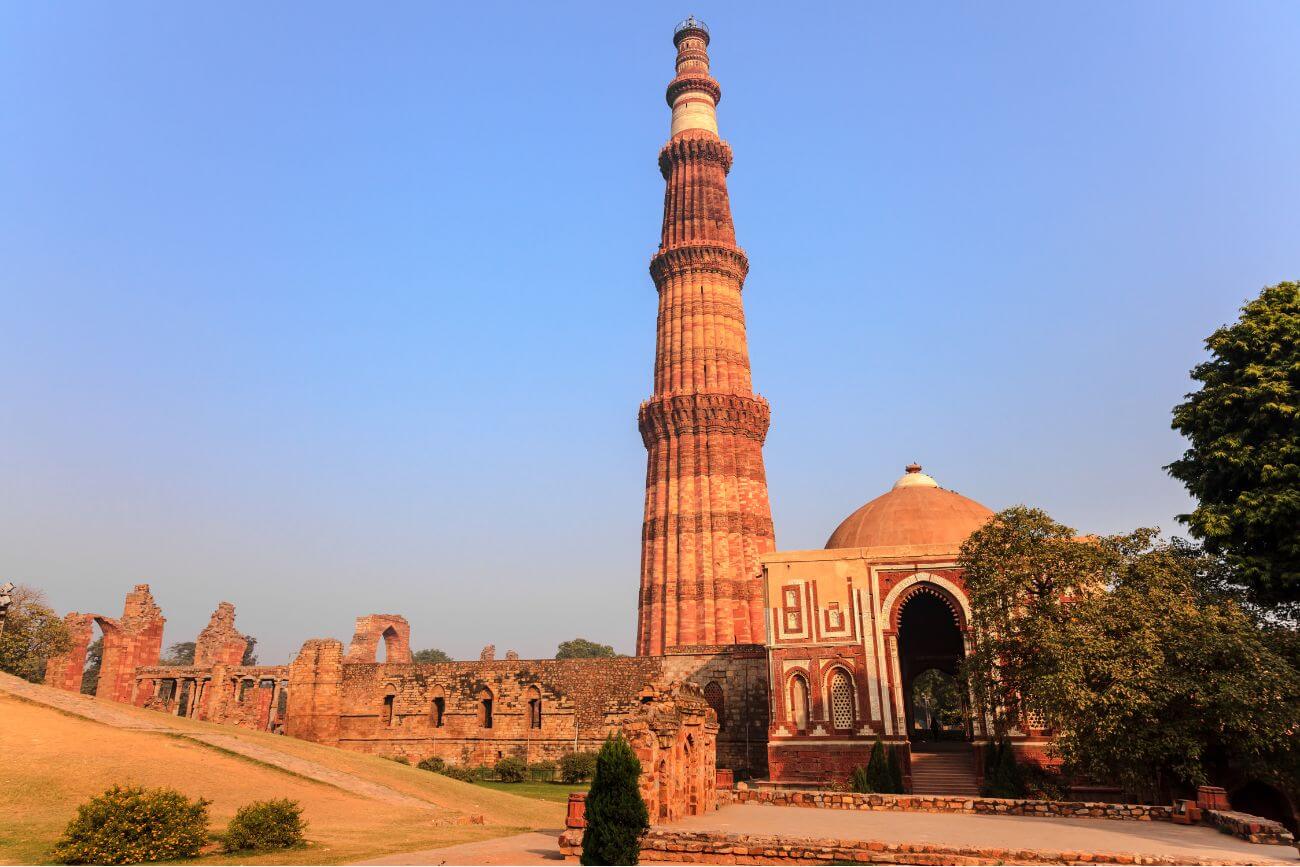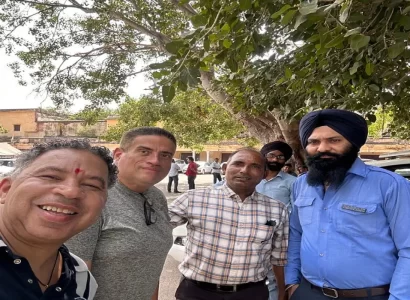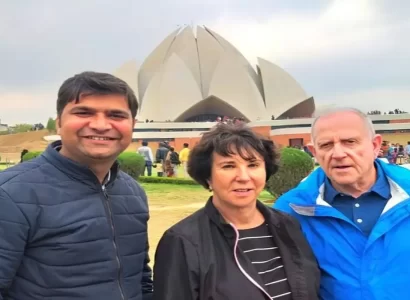Red sandstone was symbolic of might and strength in the history of Delhi and this is nowhere better replicated than in the construction of the tallest minaret in the world, Qutub Minar. Built of bricks, this mammoth structure is reflective of the greatness of the art and architecture of our past. With every little detail at the place, a concept originates, which speaks volumes of our rich past.
HISTORICITY
The Qutub Minar is a minaret and “victory tower” that forms part of the Qutub complex, a UNESCO World Heritage Site in the Mehrauli area of New Delhi, India. The height of Qutub Minar is 72.5 meters, making it the tallest minaret in the world built of bricks. The tower tapers, and has a 14.3 metres (47 feet) base diameter, reducing to 2.7 metres (9 feet) at the top of the peak. It contains a spiral staircase of 379 steps. It was built over the ruins of the Lal Kot, the citadel of Dhillika. Qutub-ud-din Aibak, a deputy of Muhammad of Ghor, who founded the Delhi Sultanate after Muhammad of Ghor’s death, started construction of the Qutub Minar’s first storey in 1199. This level has inscriptions praising Muhammad of Ghor. Aibak’s successor and son-in-law Shamsuddin Iltutmish completed a further three storeys. After a lightning strike in 1369 damaged the then top storey, the ruler at the time, Firuz Shah Tughlaq, replaced the damaged storey, and added one more. Sher Shah Suri also added an entrance while he was ruling and the Mughal emperor Humayun was in exile.
SIGNIFICNCE OF THE NAME
It is named after Khwaja Qutbuddin Bakhtiar Kaki a 13thcentury Sufi saint; Shamsuddin Iltutmish was a devotee of his. The Minar is surrounded by several historically significant monuments of the Qutub complex. Quwwat-ul-Islam Mosque, to the north-east of the Minar was built by Qutub-ud-Din Aibak in A.D. 1198. It is the earliest extant – mosque built by the Delhi Sultans. It consists of a rectangular courtyard enclosed by cloisters, erected with the carved columns and architectural members of 27 Hindu and Jaina temples, which were demolished by Qutub-udDin Aibak as recorded in his inscription on the main eastern entrance.
Later, a lofty arched screen was erected and the mosque was enlarged, by Shams-ud- Din Itutmish (A.D. 1210-35) and Alaud-Din Khalji. The Iron Pillar in the courtyard bears an inscription in Sanskrit in Brahmi script of fourth century A.D., according to which the pillar was set up as a Vishnudhvaja (standard of God Vishnu) on the hill known as Vishnupada in memory of a mighty king named Chandra.
Qutub Minar was begun after the Quwwat-ul-Islam Mosque, which was started around 1192 by Qutub-ud-din Aibak, first ruler of the Delhi Sultanate. The mosque complex is one of the earliest that survives in the Indian subcontinent. In 1505, an earthquake damaged Qutub Minar; it was repaired by Sikander Lodi. On 1 September 1803, a major earthquake caused serious damage.
Major Robert Smith of the British Indian Army renovated the tower in 1828 and installed a pillared cupola over the fifth storey, thus creating a sixth. The cupola was taken down in 1848, under instructions from The Viscount Hardinge, then Governor General of India. It was reinstalled at ground level to the east of Qutub Minar, where it remains. It is known as “Smith’s Folly”. It was added to the list of World Heritage Site by UNESCO in 1993. It is one of most visited tourist spots in Delhi.
ALAI DARWAZAALA’I DARWAZA
Alai Darwazaala’i Darwaza (English: Gate of Alauddin) is the southern gateway of the Quwwat-ul-Islam Mosque in Qutub complex, Mehrauli, Delhi, India. Built by Sultan Alauddin Khalji in 1311 and made of red sandstone It has a special significance in Indo-Islamic architecture as the first Indian monument to be built using Islamic methods of construction and ornamentation. It was a part of his plan to extend the Quwwat-ul-Islam Mosque on four sides. Although he planned to construct four gates, only the Alai Darwaza could be completed as he died in 1316. It serves as the southern gateway of the mosque. It is located at the southern part of the Qutub complex. In 1993, the Darwaza and the other monuments of the complex were designated a World Heritage Site.
IRON PILLAR
Another popular tourist attraction in Delhi is also nearby. The iron pillar was built in honor of Chandragupta II during the reign of Gupta in the 4th century. This 7.2 meter high pillar is made of 98% iron, but is rust-free and sturdy. At the top of the pillar is the statue of Garuda.
IMPORTANT DETAILS
TIMINGS
Qutub Minar timings are from 7 AM to 5 PM. The opening time of Qutub Minar is 7 AM and it is best to visit the monument during early morning hours to avoid the crowd. The closing time of Qutub Minar is 5 PM. It is open all days of the week.
QUTUB MINAR ENTRY FEE
- 30 per person for Indians
- 0 per child (below 15 Years)
- 500 per person for Foreign Tourists
- 25 for Still Camera (non-commercial use)
- 25 for Video Camera (non-commercial use)
QUTUB MINAR PHONE
- 011 2336 5358
- 011 2664 3856
LOCATION
- Kalka Das Marg, Mehrauli
NEAREST METRO STATION TO QUTUB MINAR
- Qutub Minar Metro Station
BEST TIME TO VISIT
- Although one can visit Qutub Minar anytime during the day, the best time to visit is during the Indian classical music festival which usually happens during the month of November or December. While visiting, you can leave your bags in the cloakroom and explore this ancient monument comfortably.
Qutub Minar is an essentially important monument in the Medieval history of India. It has a worldwide acclamation and recognition. Therefore, for every travel enthusiast Delhi is incomplete without a visit to the Qutub Minar.







